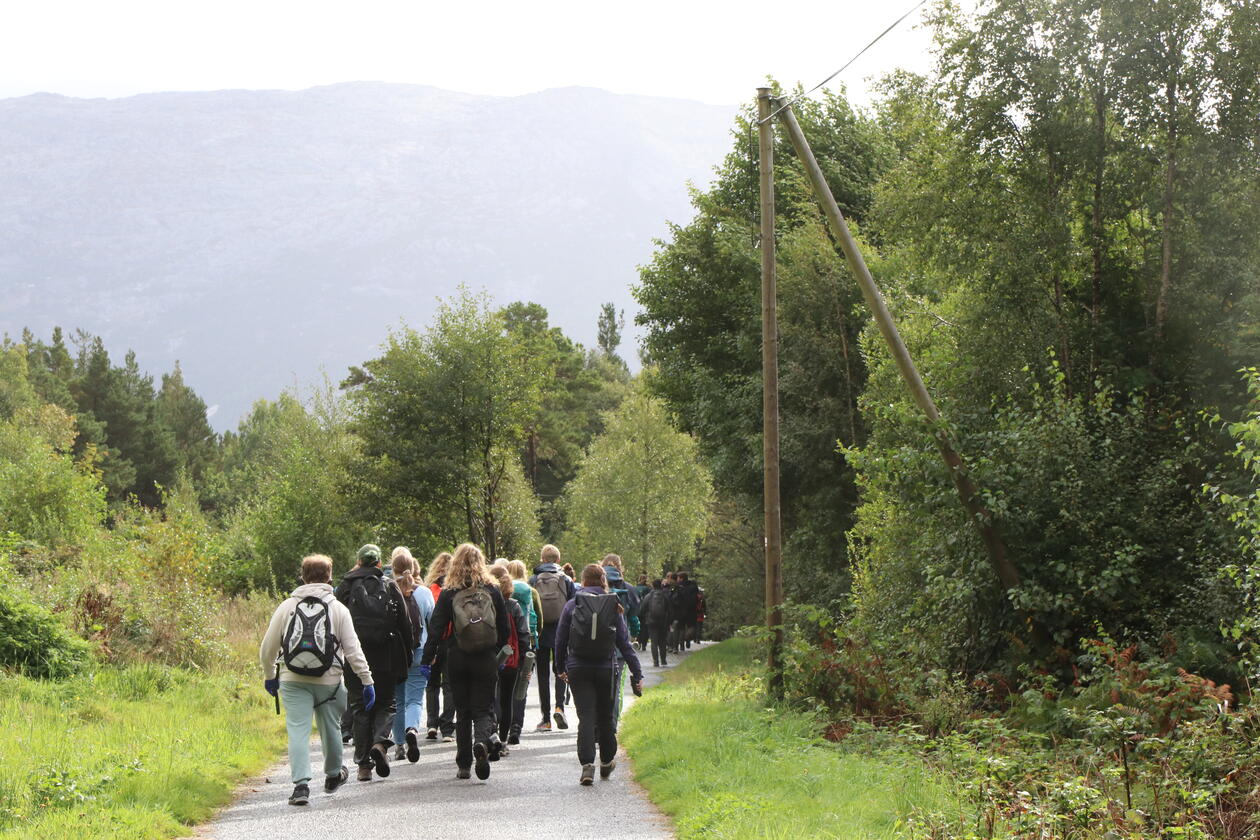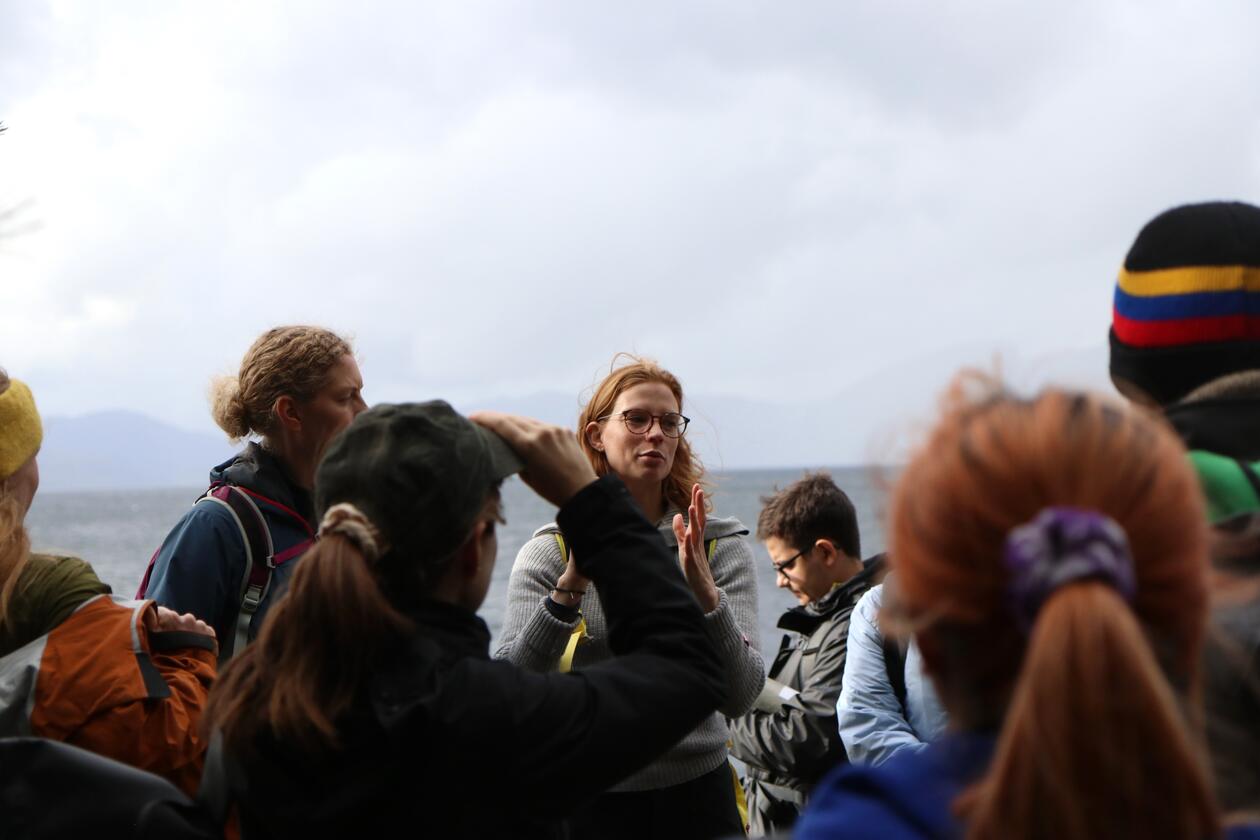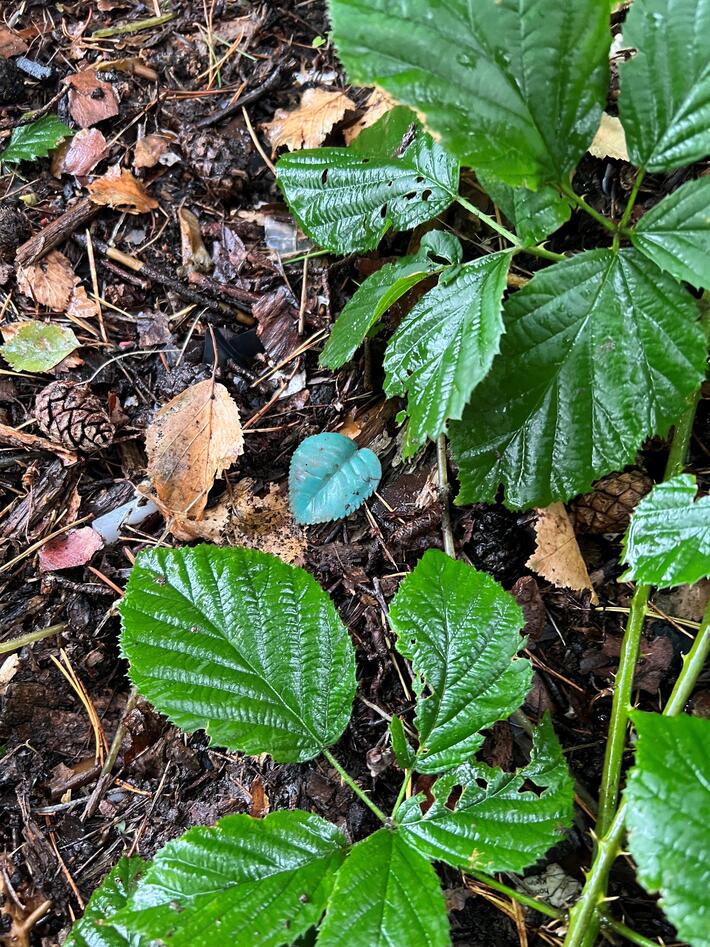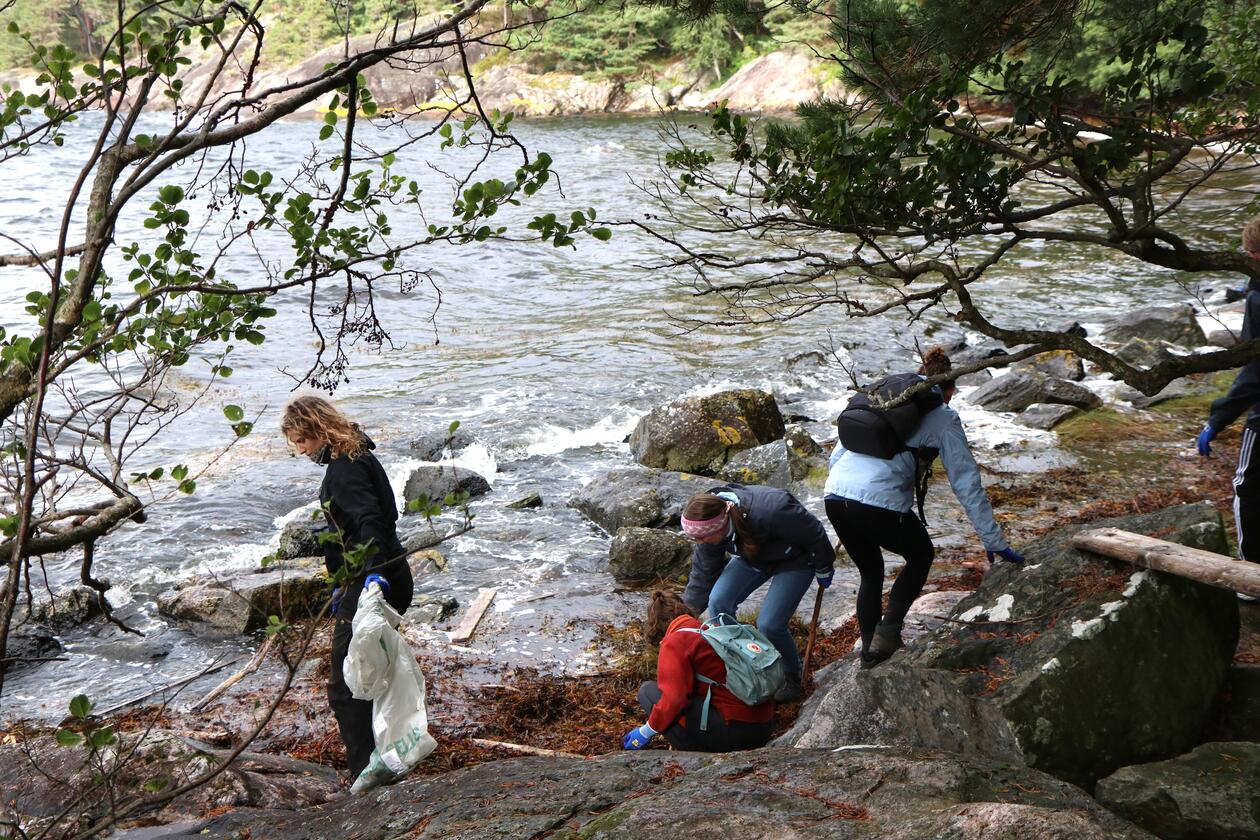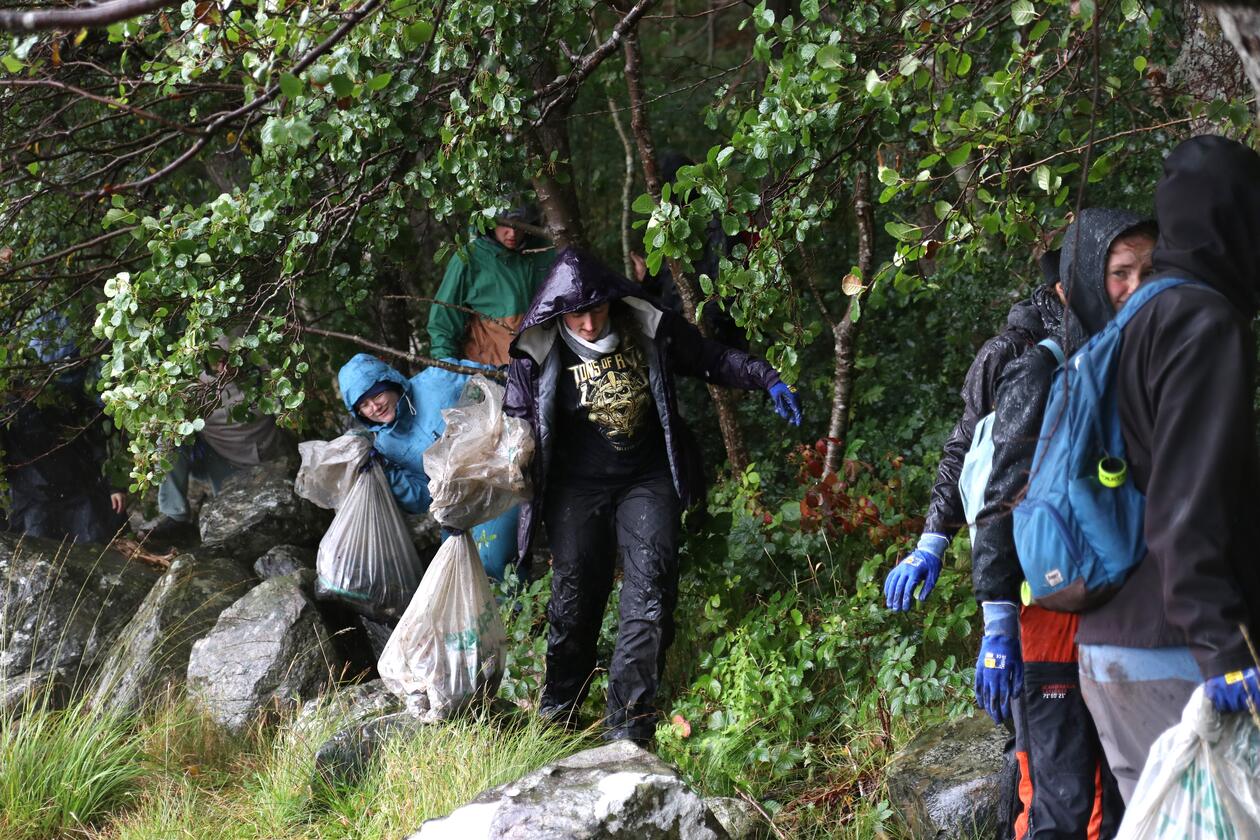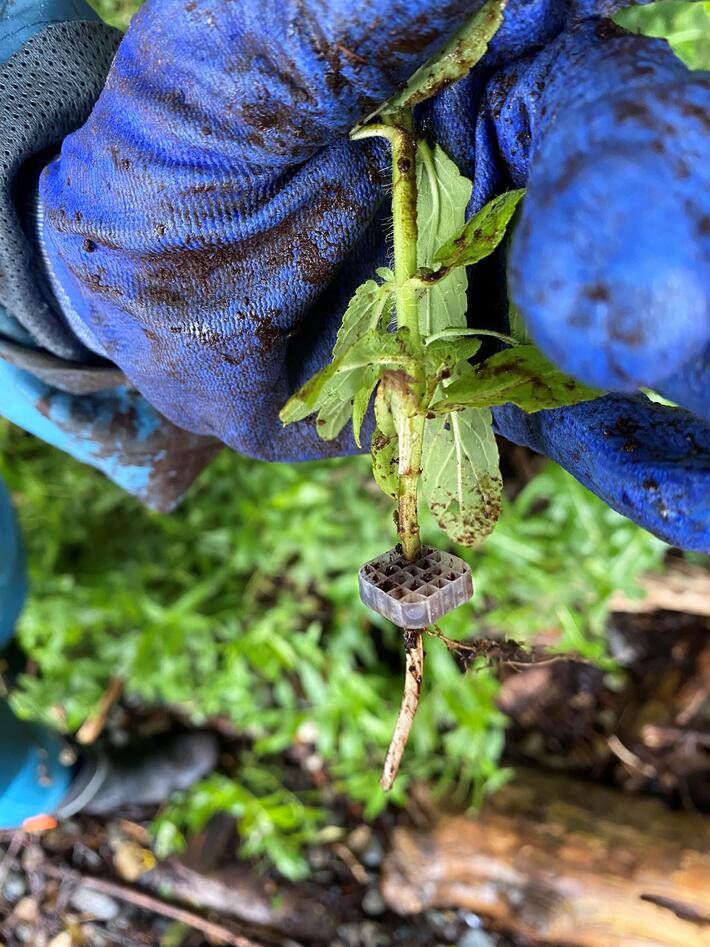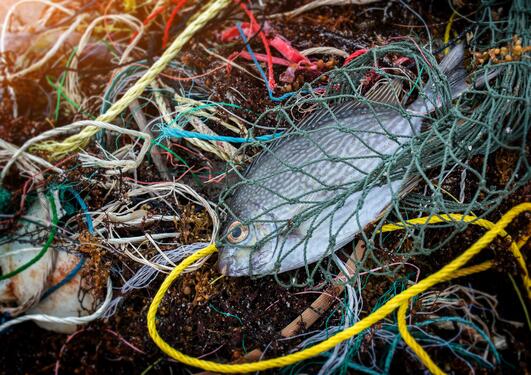Top effort for a Clean Hardangerfjord
On 15 September, the plastic waste clean-up action Rein Hardangerfjord (Clean Hardangerfjord) took place. The Plastics Network at UiB filled a bus with students and staff who wanted to make an effort for the environment.

Hovedinnhold
“It just never ends”!
A group of students looks at the cove that the University of Bergen (UiB) has been given responsibility for cleaning, as part of the large plastic clean-up campaign Rein Hardangerfjord (Clean Hardangerfjord). The campaign is organized annually by the “Framtidshavet” foundation and partners, and like last year, a large number of volunteers joined forces along the entire fjord, with a long-term goal of clearing the Hardangerfjord of plastic waste.
Tens of thousands of pieces of plastic
After getting off the bus at the clean-up site a little south of Norheimsund, Hardanger, the group from UiB, around 40 students and staff, were ready to get to work. At first glance, it looked like there would be little to do, as there were no large pieces of plastic, car tires, or the like, which you often find at this type of campaign.

Student and sustainability pilot at UiB, Merjem-Emma Torlo Djugum.
On closer inspection, however, a rather different and gloomy picture emerged. Thousands upon thousands of tiny plastic pieces were found all along the cove, and in several layers under the soil.
Among the most common finds at the campaign were waste from fishery and industry, as well as waste from personal consumption, such as plastic caps, q-tips, parts of candy bags and the like. This is waste that gradually breaks down into microplastics, posing a danger to both fish, birds, and other life along our coast and in the sea.

These pieces of plastic, which originate from sewage treatment plants, were found in large numbers along the seashore.

Plastic devil that does not belong in nature.
Useful and social event
“It makes me angry to think about the amount of plastic that ends up in our nature”, says Anita Kowalczyk, one of the students who took part in the campaign.
She is studying the master's programme in sustainability at UiB and was happy to be a part of the trip to Hardanger - both to make an effort and because of the social aspect of this type of event.
“I have met many new people, and it also feels good to do something important for the environment”, she says.

Anita Kowalczyk was happy to meet other engaged students, but at the same time she is upset about the plastic littering in society.
Great commitment
Professor Odd Andre Karlsen is head of the Plastics Network at UiB. He says that the clean-up was carried out in collaboration with Framtidshavet - and describes a successful operation.
“Students and staff showed great commitment and top effort. Even though the rain was pouring down during parts of the event, the group stayed very positive throughout”, Karlsen says.
He goes on to say that the Plastic Network support clean-up campaigns such as Rein Hardangerfjord.
“Removing plastic waste from the beach zone before the plastic breaks down further into micro- and nanoplastic is an important measure to ensure that plastic does not enter the food chain and cause damage to organisms and marine ecosystems. Removing plastic is at the same time a low-hanging fruit and an important means of action, where the effort put in is immediately visible to the naked eye”, he says.
“It is also a great opportunity to create an arena where those involved in the plastic issue can meet each other and get to know others who are concerned about the environment. This year I was glad to see that so many international students wanted to join the action”.
“A great inspiration”
“We are incredibly grateful to all our volunteers who participate in the work for a cleaner fjord. This is so important, and it is a great inspiration for us that so many people join in”, says the initiator of Rein Hardangerfjord; Kenneth Bruvik in the foundation Framtidshavet.
He adds:
“That the students at the University of Bergen are engaged in environmental matters is no surprise, but none the less gratifying. They have made an invaluable effort during the clean-up, and in that way also helped to bring further attention to this important matter. I just want to say a big thank you to all the volunteers!”

Top effort from UiB students and staff during the plastic clean-up at Norheimsund in Hardanger.
